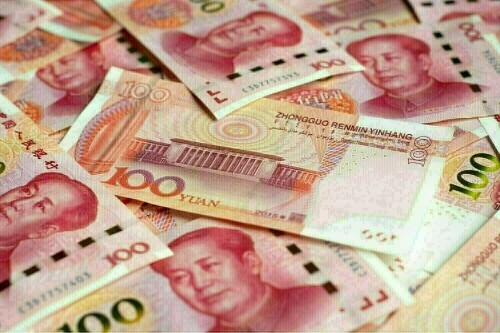Yuan Declines Amid Trade Tension Focus
The Chinese yuan experienced a dip against the U.S. dollar on Monday as investors kept a close watch on the dollar’s performance in global markets and developments related to trade disputes between the world’s two largest economies.
Currency market participants indicated they would also be closely monitoring China’s manufacturing figures for April, scheduled for release on Wednesday, seeking indications of any economic impact resulting from the U.S. President’s tariffs imposed on Chinese products.
Despite claims of progress in trade relations with China and other nations, concrete evidence remains limited. The U.S. Treasury Secretary did not confirm the President’s assertion that tariff discussions with China were in progress.
Economists at a financial institution suggested that China is likely to remain open to negotiations but is not expected to rush into an agreement with the U.S.
As of a specific time, the onshore yuan had decreased by 0.13%, trading at 7.2960 per dollar. The offshore yuan also saw a decline of approximately 0.09% in Asian trading, reaching 7.2948.
Prior to market commencement, the People’s Bank of China (PBOC) established the midpoint rate, which dictates the yuan’s trading range within a 2% band, at 7.2043 per dollar. This rate marked its strongest level since April 8 and exceeded estimations by 785 pips.
This month, the PBOC marginally loosened its grip on the currency, permitting official guidance to weaken beyond the important level of 7.2.
However, the guidance exceeded market predictions, leading traders to believe it was an official effort to maintain yuan stability while providing some flexibility to mitigate the impact of tariff shocks.
Highlighting external vulnerabilities, the yuan’s value against its primary trading partners, as indicated by the CFETS yuan basket index, has decreased by approximately 5% year-to-date, reaching 96.42, based on calculations derived from official data.
The yuan has shown little movement against the dollar so far this year.
An economist at an investment bank stated that they maintain their year-end forecast of 7.35 for USD/CNY, implying a yuan depreciation against the CFETS basket, which should bolster China’s exports and growth to some extent.
China’s deputy central bank governor affirmed the continuation of a moderately accommodative monetary policy and heightened support for the economy, while also aiming to maintain yuan stability.
In global markets, the dollar commenced the week steadily as investors braced for a series of economic data releases that could offer an initial indication of the impact of trade tensions.



Comments (0)
No comments yet. Be the first to comment!
Leave a Comment